Трагические музы: Моника Витти и Анна Карина
In the golden era of European art cinema, two actresses came to embody the work of the directors that they were associated with on both a personal and professional level to an extent that it is hard to separate one from the other. They are Monica Vitti and Anna Karina, and the directors are respectively Michelangelo Antonioni and Jean-Luc Godard.
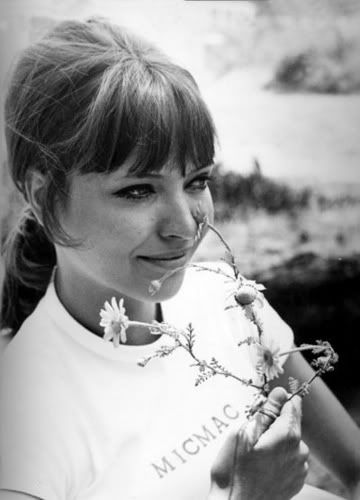
Anna Karina

Monica Vitti

Tragic Muses - Monica Vitti and Anna Karina
by Alan Boshier
Monica Vitti is the nea plus ultra of erotic angst; forget the infeasibly upholstered Anita Ekberg, or the studied sophistication of Sophia Loren - here is the definite gorgeous article. In her work with Antonioni she epitomized the dispassionate (yet passionate) beautiful victim/observer of alienation and ennui; away from Antonioni she was rarely as compelling although she worked for other great directors including Bunuel on the The Phantom of Liberty (1974).
After making her film debut in Ettore Scola’s Ridere, Ridere, Ridere (1954), she first worked with Antonioni on Il Grido (1957), but only in the capacity of dubbing another actor. After that she appeared in every one of Antonioni’s quartet of masterpieces from the early 1960’s, taking the female lead in all but one of them. In the controversial but ground-breaking L’Avventura (1960) she was the heroine torn between finding her best friend and submitting to the amorous advances of the latter’s lover. In La Notte (1961) she played the indulged but bored daughter of a wealthy industrialist who both in their own way attempt (and fail) to seduce Marcello Mastrioanni’s writer - although it’s only a supporting role the film shimmers when she’s on screen and seems strangely flat elsewhere. In L’Eclipse (1962) she embarks on a famously abortive affair with Alain Delon’s financial trader; the final remarkable scene of their non-meeting is one of Antonioni’s greatest set-pieces. In Il Deserto Rosso (1964) she takes on her most extreme role as that of a woman on the verge of a nervous breakdown who embarks on a singularly disastrous affair with a rather uncomfortable-looking Richard Harris; Antonioni’s bold and experimental use of colour and sound to capture an almost alien landscape (in reality Ravenna) provides a vivid manifestation of her character’s inner turmoil.
Vitti made several films for other directors before reuniting with Antonioni for what was presumably the last time on Il Misterio di Oberwald (1980), a film ahead of its time in its innovative use of video.
Anna Karina seems so quintessentially the French gamine that it comes of something of a shock to discover that she was born in Denmark. After a brief career as a cabaret singer and model, she arrived in Paris in 1958 and shortly thereafter her first association with Godard was ironically a non-association, turning down a role in A Bout de Souffle (1959). Clearly her rejection didn’t count against her as Godard cast her in his next controversial film Le Petit Soldat (1960), whose references to torture practiced by both sides during the French-Algerian war led to its being banned in France for several years; here she played a double agent with what was to become a typical melange of bewitching yet infuriating charm.
Her next film with Godard was the “anti-musical” musical Une Femme est une Femme (1961), after which the couple married; the marriage lasted 6 years and 4 movies. In 1962 they made what may be the apogee of their filmic relationship in Vivre sa Vie in which she played Nana, a record shop assistant who is compelled from financial necessity to drift into prostitution. The twelve tableaux into which Nana’s life is structured provide a mesmerizing range of directorial styles and techniques but ultimately this is a film about, and in love with, a face. It’s not insignificant that the film Nana goes to see is Dreyer’s Le Passion de Jeanne D’Arc, which also fetishises a face (that of actress Maria Falconetti), and Godard also draws parallels with other screen sirens such as Louise Brooks (specifically Pandora’s Box) and Elizabeth Taylor. The film is worth viewing for a scene in the record shop alone; has any other actress come close to communicating a sense of intense boredom shining through dazzling beauty as well as Karina?
Then she appeared in Bande à Part (1964) and Alphaville (1965), the latter a dystopian and determinedly low-tech science fiction tale co-starring Eddie Constantine as private eye Lemmy Caution (and curiously prefigured in Vivre sa Vie by the aspiring actress Nana referring in that film to “having worked with Eddie Constantine”). Then the second and final masterpiece Pierrot le Fou (1965) where the offscreen personal breakdown is agonizingly yet brilliantly mirrored in the relationship between Karina and Jean-Paul Belmondo in the lead roles. This is a terminal film in several senses, not only in terms of personal relationship, but also in terms of Godard’s style and approach to film; in it one sees the transition from Godard’s earlier work that celebrated American popular genre film to the more strident and often anti-American stance of his work in the late 1960’s and beyond.
After their split, Karina would work with Godard again in the little-seen Made in USA (1966) and in one of the episodes from Le Plus Vieux Métier du Monde (1967). She had one or two other notable appearances, including one for Fassbinder in his typically coruscating Chinese Roulette (1976). But, like Monica Vitti after the end of her association with Antonioni, it seemed that the magical artistic and personal chemistry was not to be repeated in other circumstances.
Биографии
ВИТТИ (Vitti) Моника (р. 03. 11. 1931), итальянская актриса. Настоящие имя и фамилия - Мария-Луиза Чечарелли.
Свое сценическое имя образовала из фамилии матери Аделины Виттилья. В 1953 окончила Академию драматического искусства, выступала на сценах римских театров в ролях классического и современного репертуара. В кино с 1954, снялась за пять лет в случайных, проходных ролях. В сезоне 1956-1957 в римском «Театро Арлеккино» познакомилась и стала работать под руководством Микеланджело Антониони, который поручил ей озвучить актрису Дориан Грай в фильме «Крик»/«Отчаяние» (Il grido, 1957). Начиная с фильма «Приключения» (L'avventura, 1959) исполняет главные роли в антониониевской тетралогии - «Ночь» (La Notte, 1960), «Затмение» (L'eclisse, 1962), «Красная пустыня» (Il Deserto Rosso, 1964). Удачно сочетая внешнюю индифферентность с интенсивной и напряженной внутренней жизнью, актриса воплотила женский образ кинематографа Антониони классической его поры. С середины 60-х годов их содружество распадается, и лишь единственный раз в телефильме «Тайна Обервальда» (Il Mistero Di Oberwald, 1980) актриса вновь снимается у Антониони в мелодраматической роли Елизаветы Австрийской.
Во второй половине 60-х годов, пройдя школу мастера и оказавшись свободной от его эстетики, неожиданно открывает в себе неудержимый комедийный дар, снимаясь в сатирических, эксцентрических, бурлескных комедиях - «Модести Блейз» (Modesty Blaise, 1966, Англия) Джозефа Лоузи, «Девушка с пистолетом»/«Не промахнись, Асунта!» (La Ragazza Con La Pistola, 1968, премия МКФ в Сан-Себастьяне) Марио Моничелли, «Драма ревности» (Dramma Della Gelosia, 1970) Этторе Сколы, «Такими уж мы, женщины, созданы» (1971) Дино Ризи, «Тереза-воровка» (Teresa La Ladra, 1973) Карло Ди Пальма, «Мои любимые» (Amore Miei, 1978) Стено, «Безумные постели» (Letti Selvaggi, 1979) Луиджи Дзампы, «Гостиничный номер» (1980) Марио Моничелли, «Я знаю, что ты знаешь, что я знаю» (Io So Che Tu Sai Che Io So, 1981) Альберто Сорди и многих других. Продолжая играть в театре, не порывает окончательно с кругом драматических ролей в фильмах - «Пацифист» (La Pacifista, 1970, совместно с Францией и Западным Берлином) Миклоша Янчо, «Призрак свободы» (Le Fantome De La Liberte, 1974, Франция) Луиса Бунюэля, «Государственные интересы»/«В интересах государства» (La Raison D'etat, 1978, Франция) Андре Кайата. Поставила свой художественный фильм «Тайный скандал» (Scandalo Segreto, 1990).
КАРИНА (Karina) Анна (р. 22. 09. 1940), французская актриса. Настоящие имя и фамилия - Ханне Карин Байер.
Родилась в Копенгагене. В Дании училась в танцевальной школе, позировала для обложек модных журналов. В кино дебютировала в 1957 году в фильме «Девушка в башмачках». После того, как этот фильм был замечен на фестивале в Канне, актриса приехала искать удачу в Париж. Здесь она встретилась с режиссером Жан-Люком Годаром и стала его женой. Снялась в лентах «Маленький солдат» (Le Petit Soldat, 1960), «Женщина есть женщина» (Une Femme Est Une Femme, 1961), «Жить своей жизнью» (Vivre Sa Vie, 1962), «Отдельная банда» (Bande A Part, 1964), «Альфавиль» (Alphaville, 1965) и «Безумный Пьеро» (Pierrot Le Fou, 1965), «Made in USA» (1967), скетч «Предвидение» (1967).
Расставшись с Годаром, Карина быстро завоевывает известность как театральная актриса, сыграв главную роль в спектакле по пьесе Дидро «Монахиня» и закрепляет ее, снявшись в картине Жака Риветта «Сюзанна Симонен, монахиня Дени Дидро» (Suzanne Simonin, La Religieuse De Denis Diderot, 1966). Историческая роль классического репертуара знаменует начало второго, вполне самостоятельного и не зависимого от Годара этапа творчества актрисы.
Будучи одним из символов «новой волны», она все же не отказывается от предлагаемых ролей в коммерческих фильмах и нередко скрадывает беспомощность режиссуры своим мастерством, определяя успех лент. В то же время режиссеры «новой волны» полушутливо говорили, что участие Карины приносит их работам несчастье, так как и «Маленький солдат» (Le Petit Soldat), и «Монахиня» подвергались цензурным гонениям. Актриса привлекла разноплановостью своего дарования внимание крупных европейских режиссеров: «Посторонний» Лукино Висконти (Lo Straniero, 1967), «Китайская рулетка» (Chinesisches Roulette, 1967) Райнера Вернера Фассбиндера, «Почти как дома» (Olyan Mint Otthon, 1978) Марты Месарош, «Остров сокровищ» (L'ile Au Tresor, 1985) Рауля Руиса, «Свидание в Брэ» (Rendez-Vous А Bray, 1971) и «Философский камень» (L'oeuvre Au Noir, 1989) Андре Дельво. В 1973 году поставила фильм «Жить вместе» (Vivre Ensemble), однако эта попытка снять серьезную социальную драму о проблемах современной влюбленной пары не имела успеха ни у критики, ни у зрителей.
Моника



"Драма ревности", 1970







"Алая женщина", 1968

"Тайна Обервальда", 1980


1990
Анна
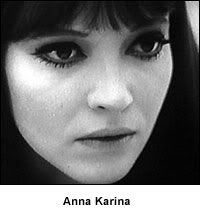
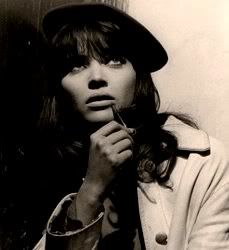
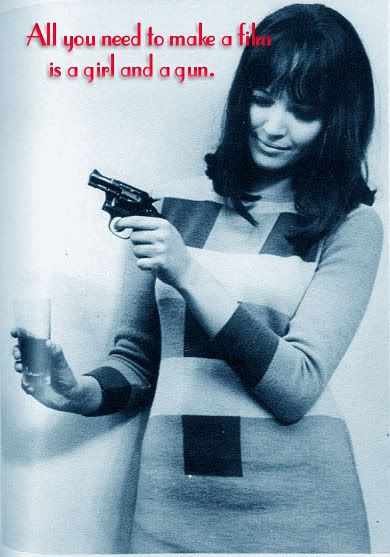
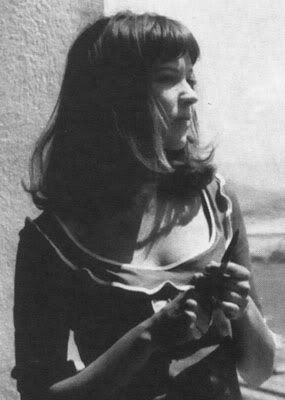
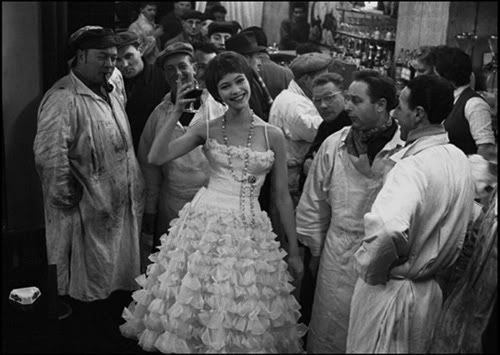
Anna Karina by Frank Horvat
Paris, 1959 - Actress Anna Karina in cocktail dress at Les Halles, the food market of Paris
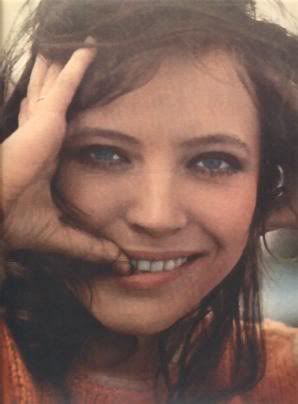
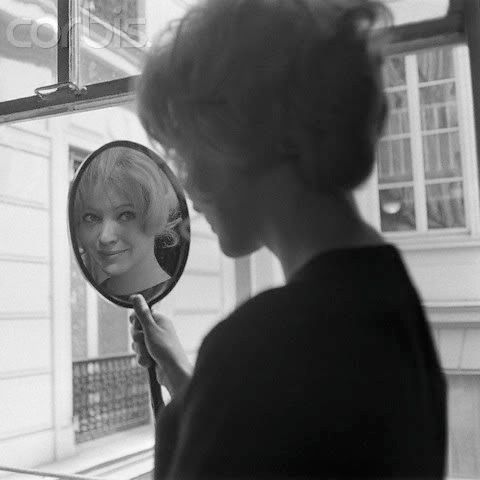
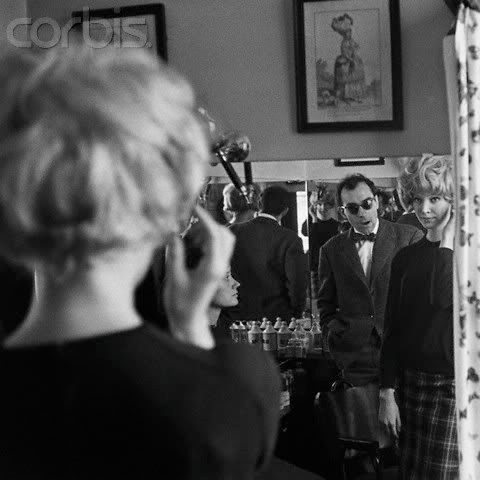
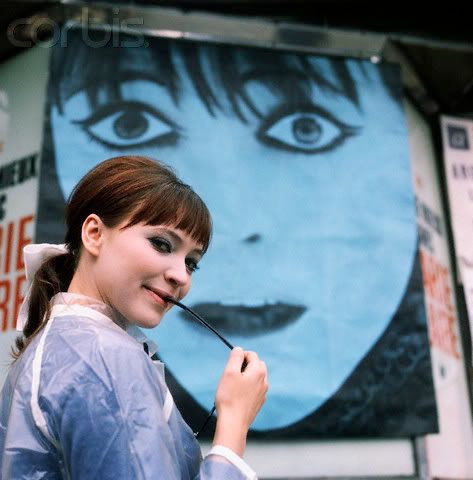
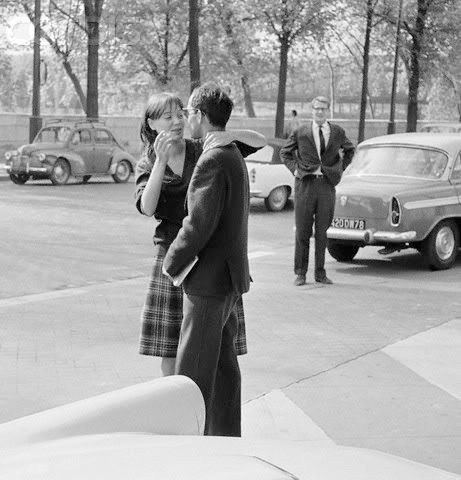
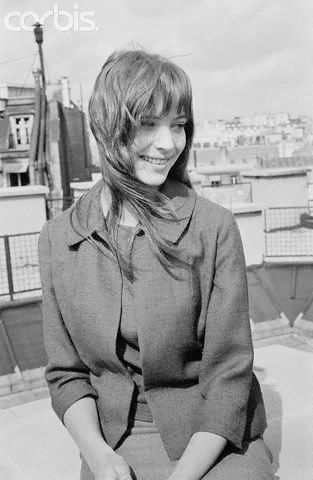
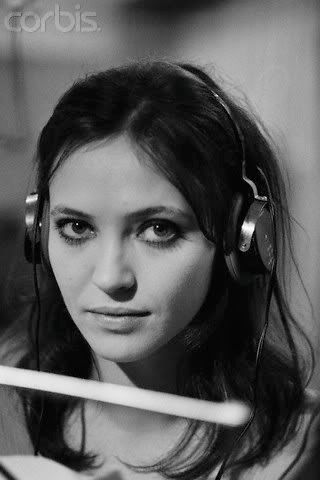
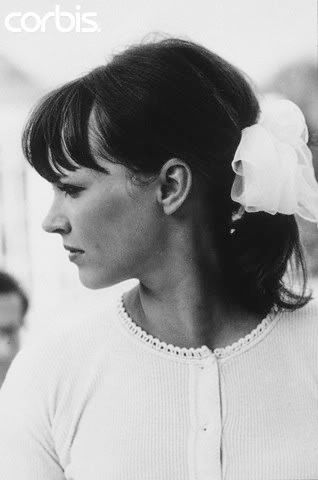
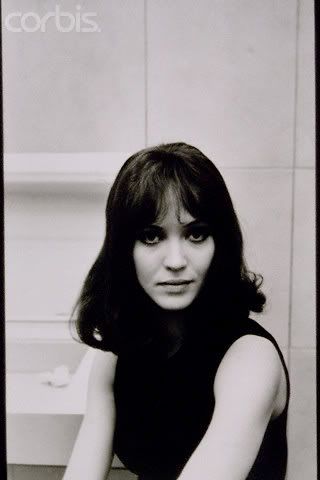
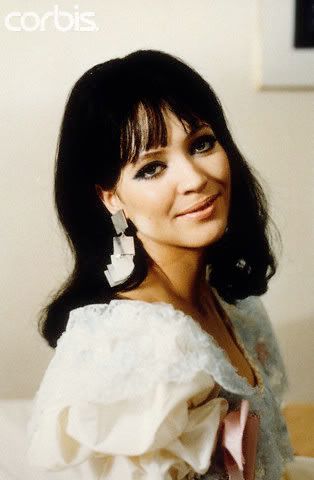
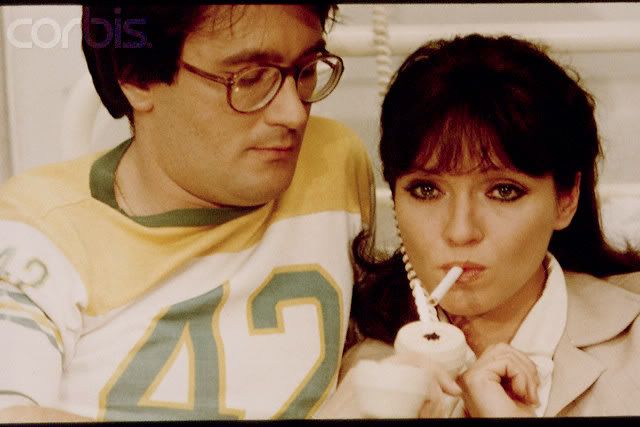
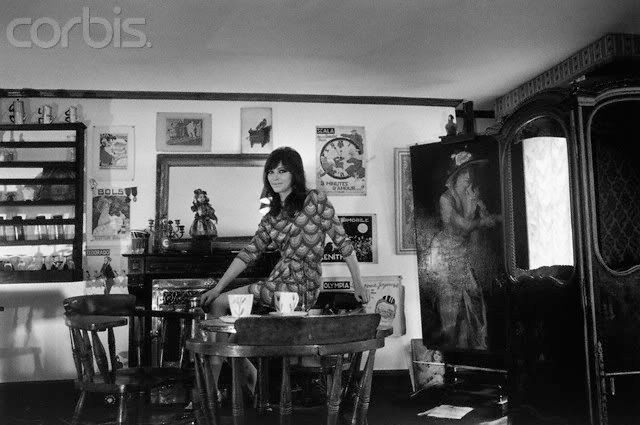
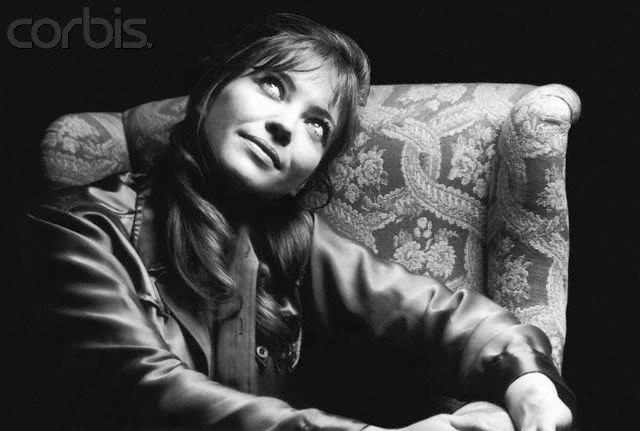
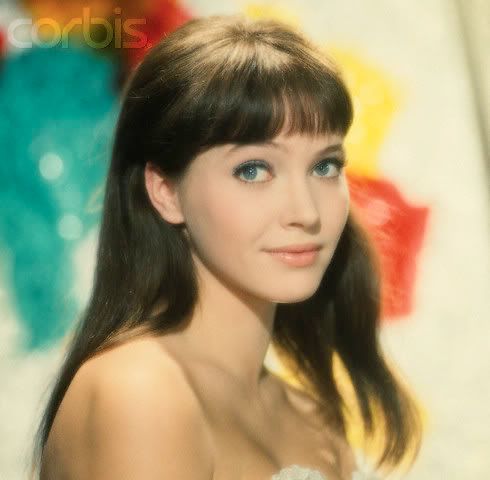
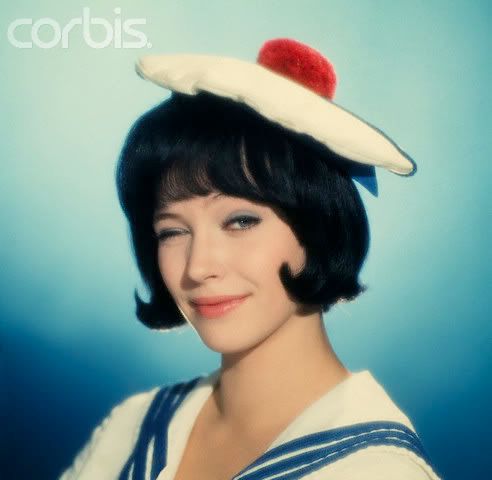
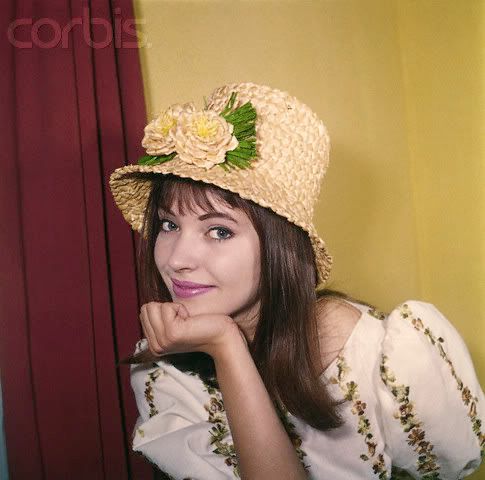
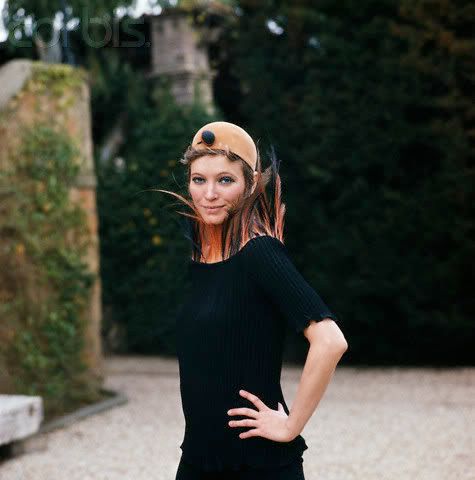
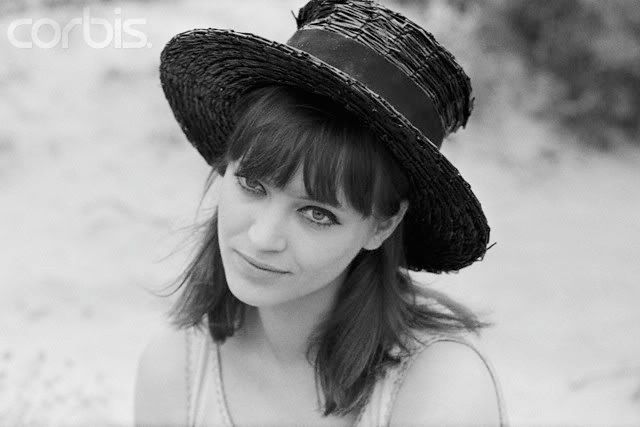
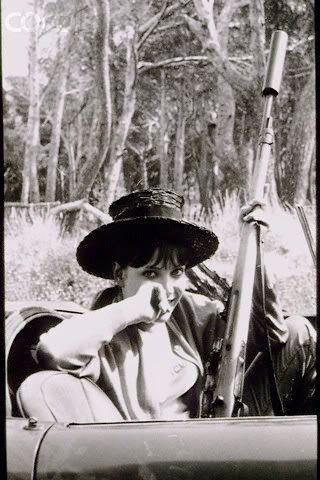
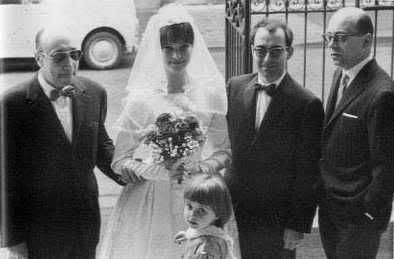
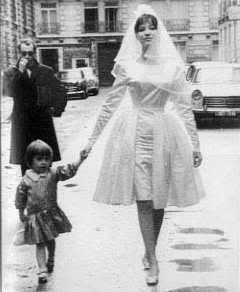
These are shots from Karina's wedding with Godard. They got married in 1961 (circa Le Petit Soldat) and these photos are just a delight to behold. I am told that the kid on the top and top-right is the child of French New Wave director Agnes Varda (dir of Cleo From 5 To 7) , who would herself marry fellow filmmaker Jacques Demy (dir of Umbrellas of Cherbourg) in 1962.
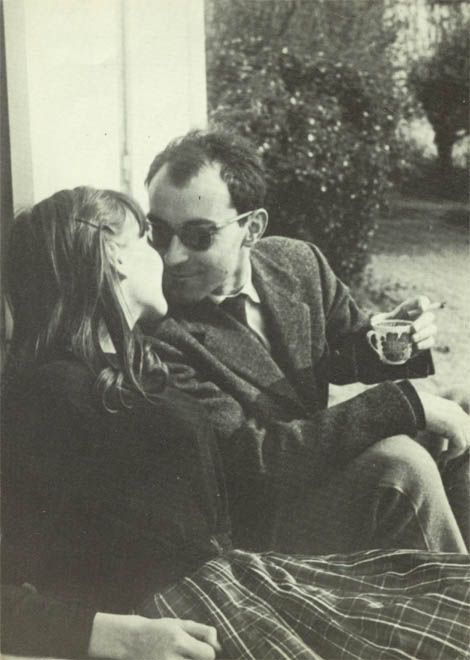
Anna and Godard in one of the most sweet shots of them together. This is a fairly popular shot and you're likely to see it in books on Godard. While on one hand, I suspect this is taken on the set of Le Petit Soldat, based on what Anna is wearing, there is another shot of her with Jean-Claude Brialy in the same getup, suggesting it's from the set of Une Femme est Une Femme. go check out the photos and make up your mind about it!
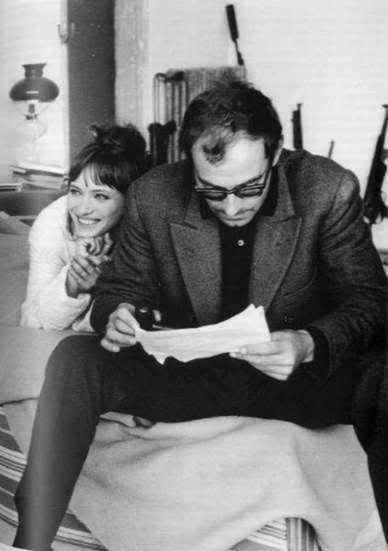
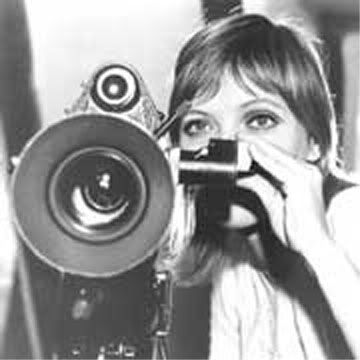
Speaking of direction, the shot above right is most likely of Anna directing Vivre Ensemble. Her lighter coloured hair is consistent with the films she did in the post-Godard films.
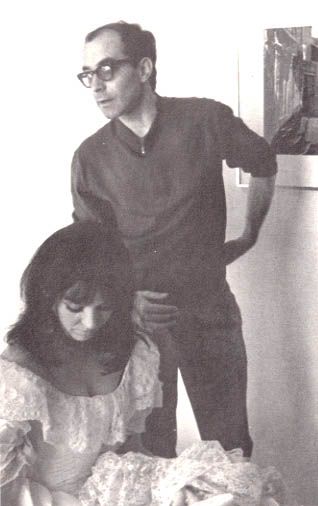
The image on the left can probably be dated to circa Pierrot Le Fou, looking at the length of Anna's hair. Godard himself has noticeably aged since the days directing his first three, four films.
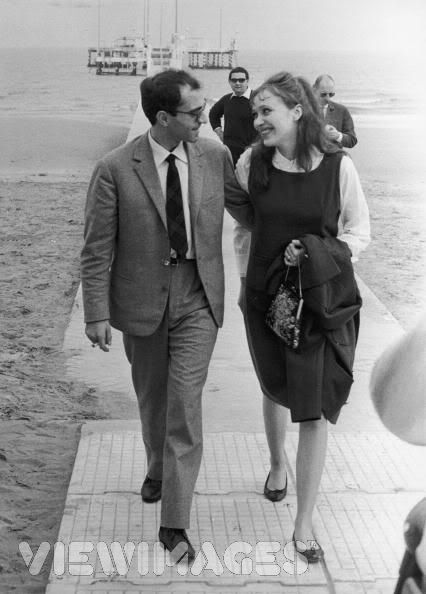
French film director Jean-Luc Godard in Venice with his wife, Danish actress Anna Karina, 5th September 1963
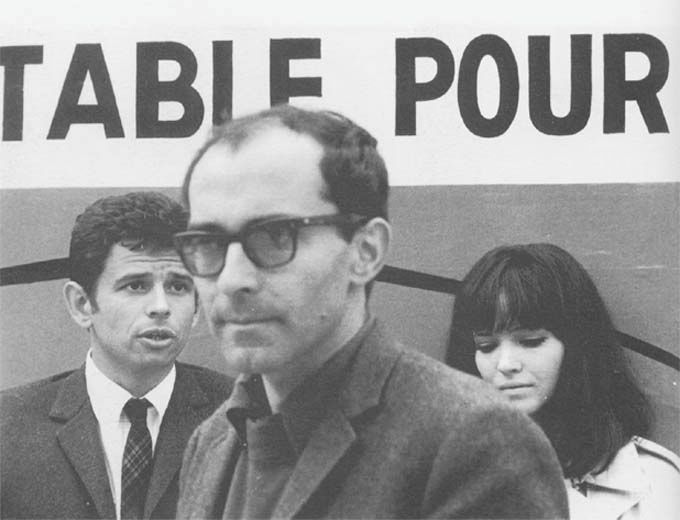
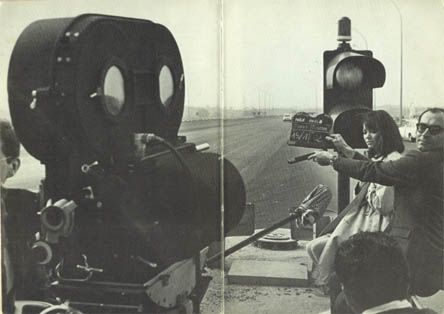
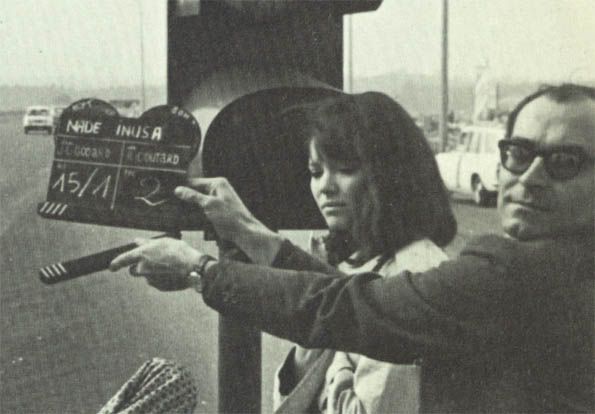
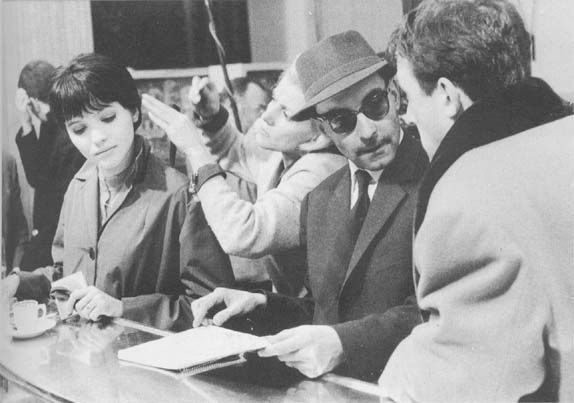
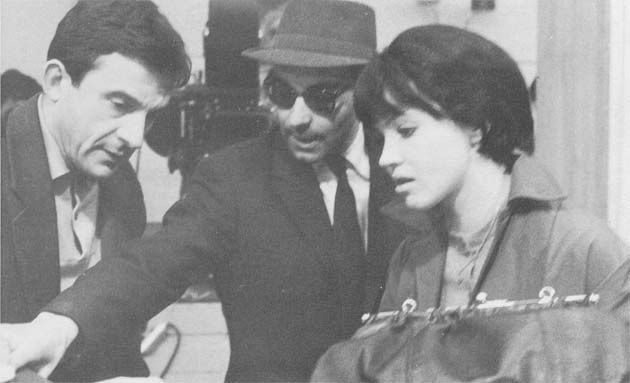
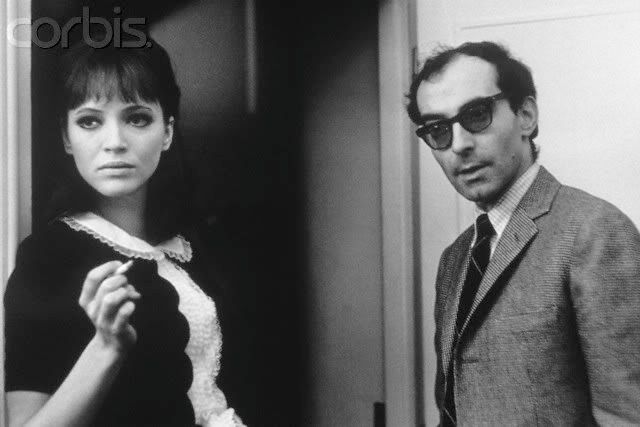
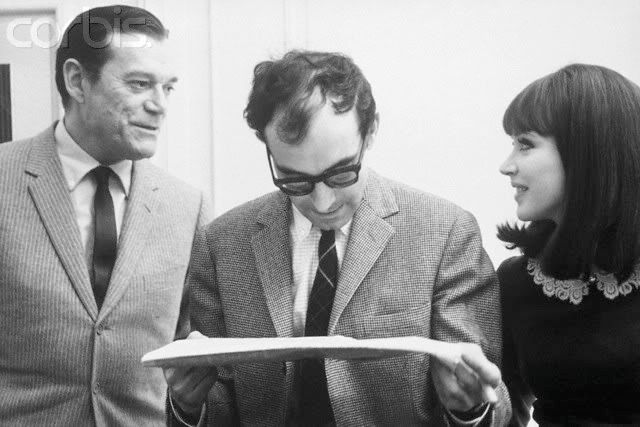
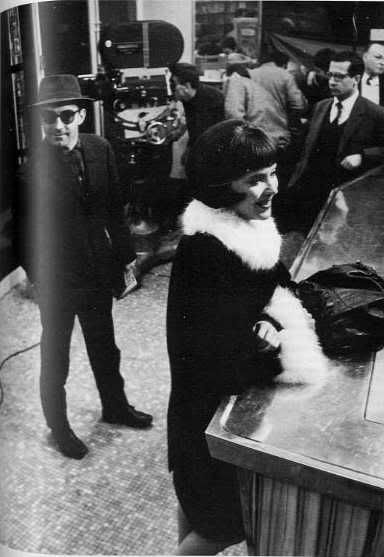
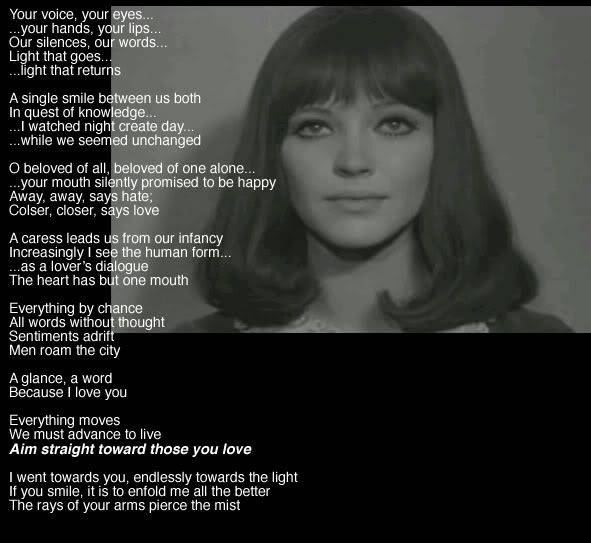
Alphaville: So what is love, then?
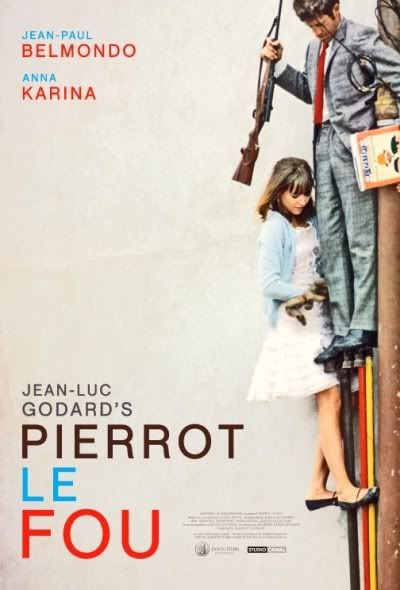
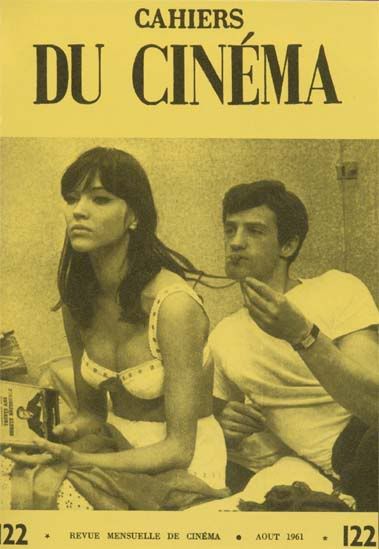
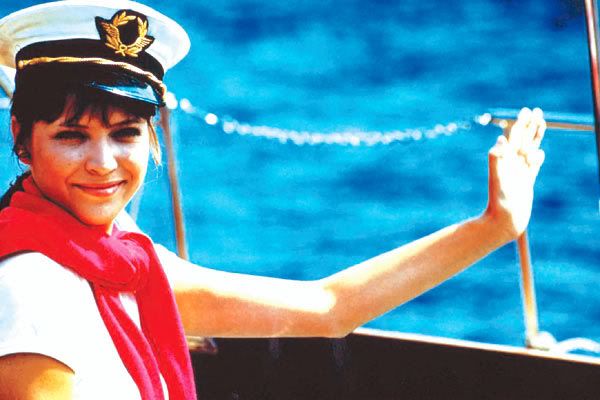
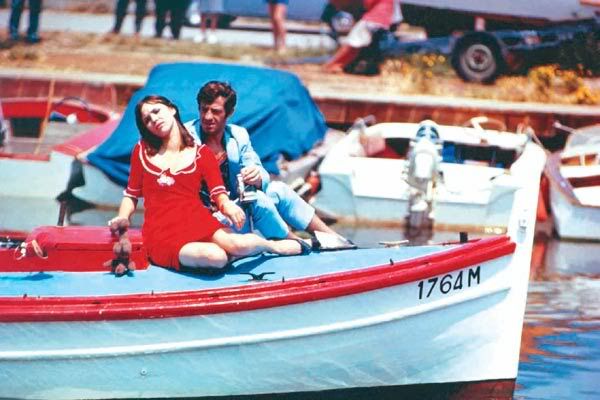
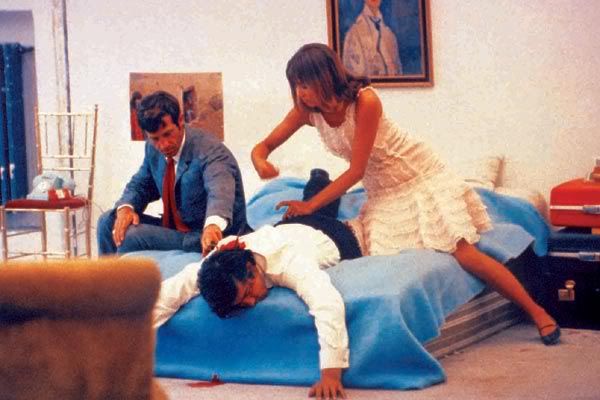
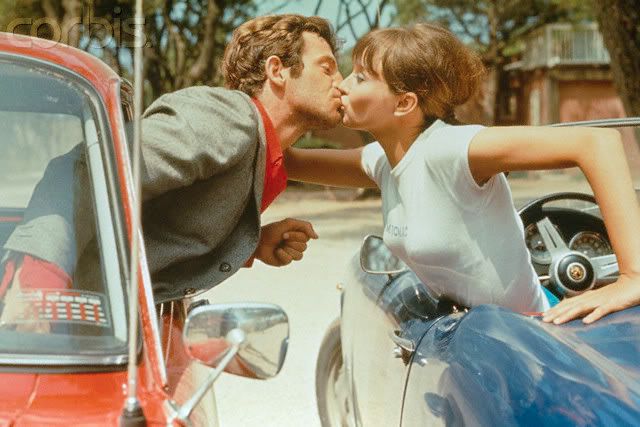
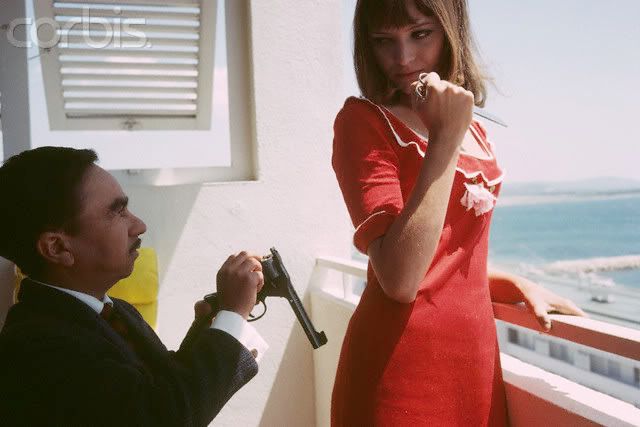
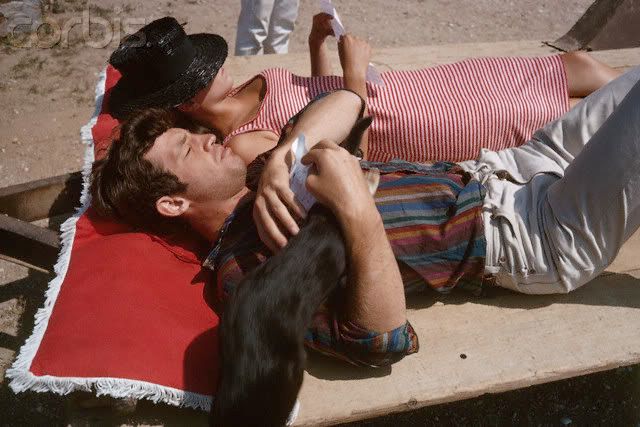
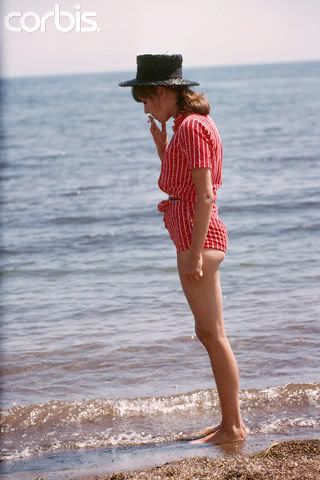
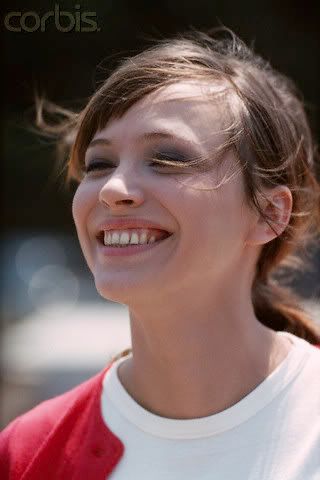
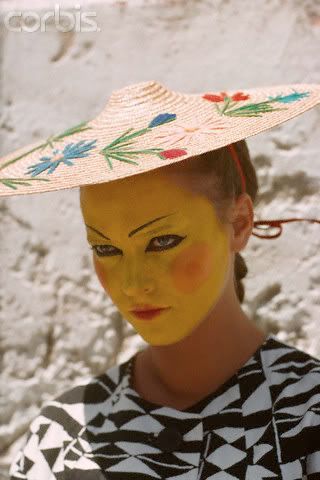
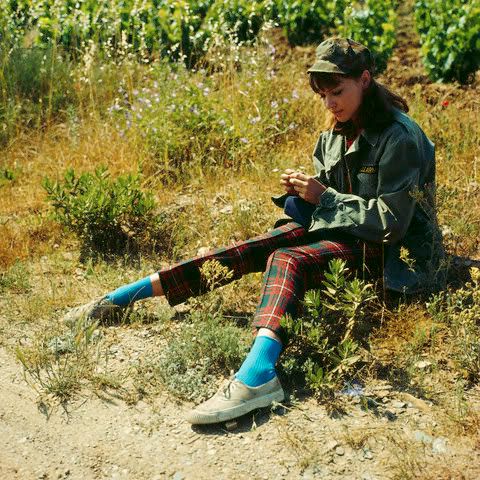

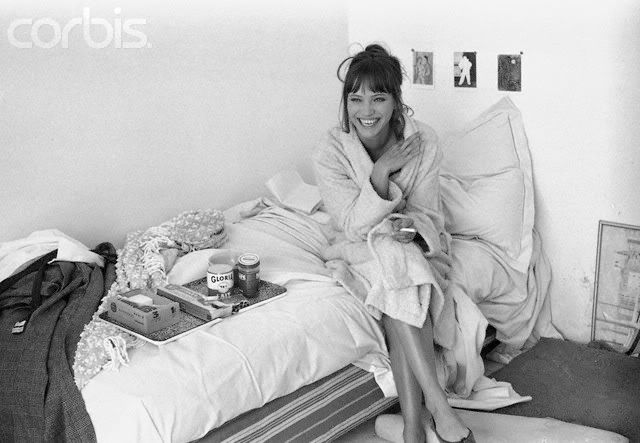
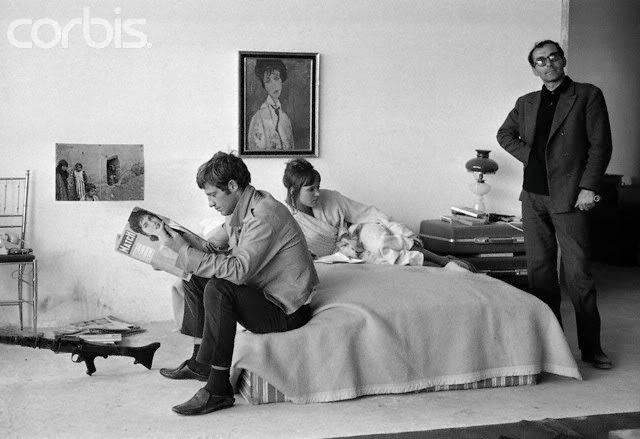

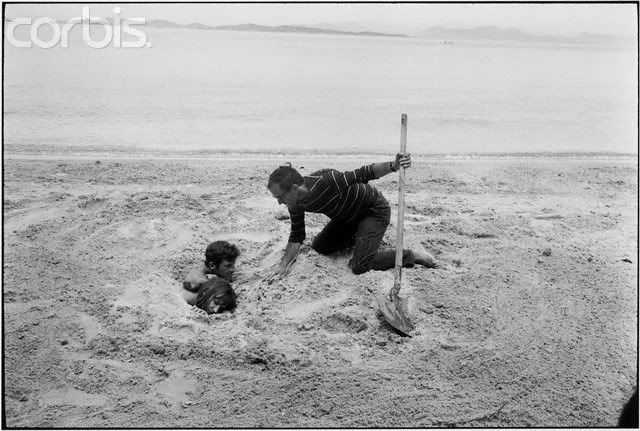
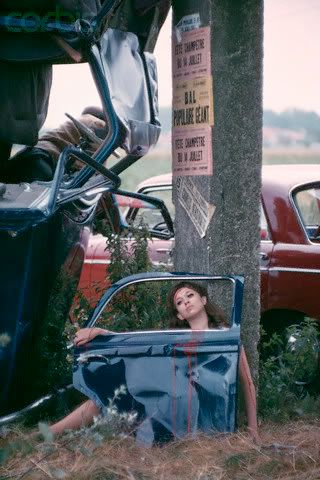
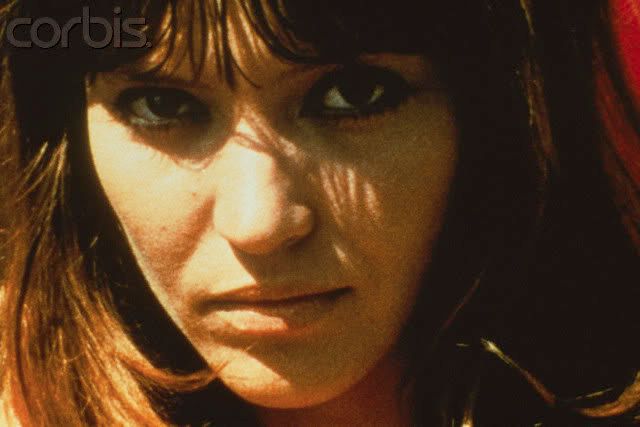
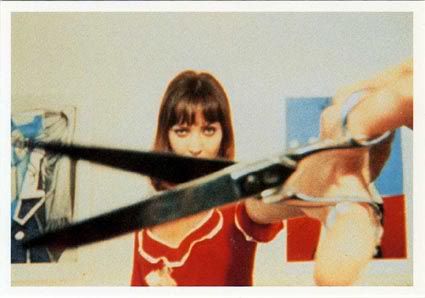
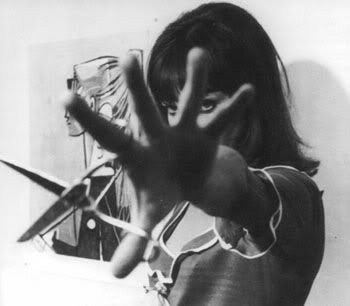
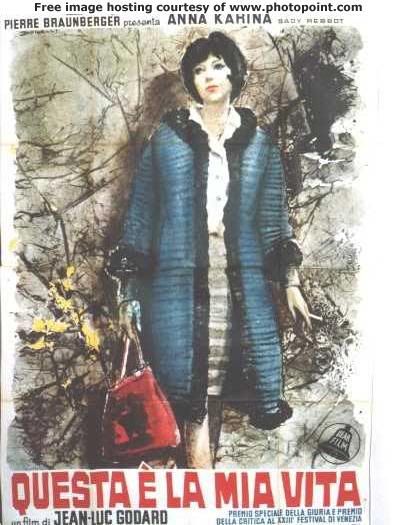
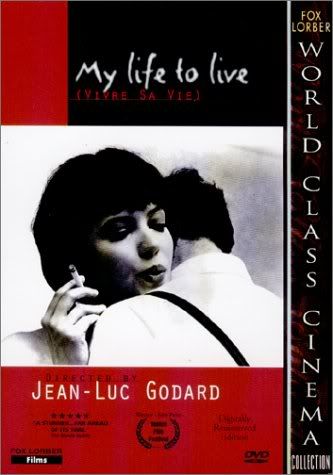
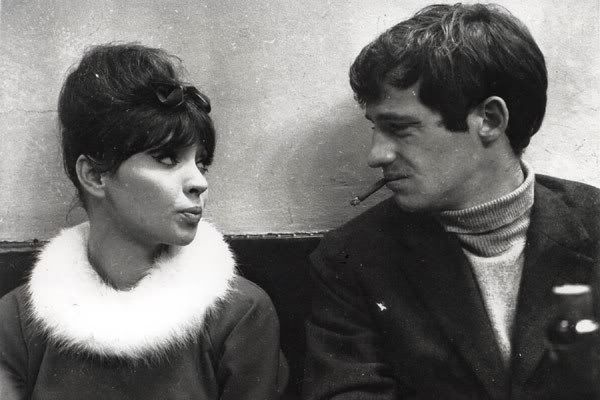
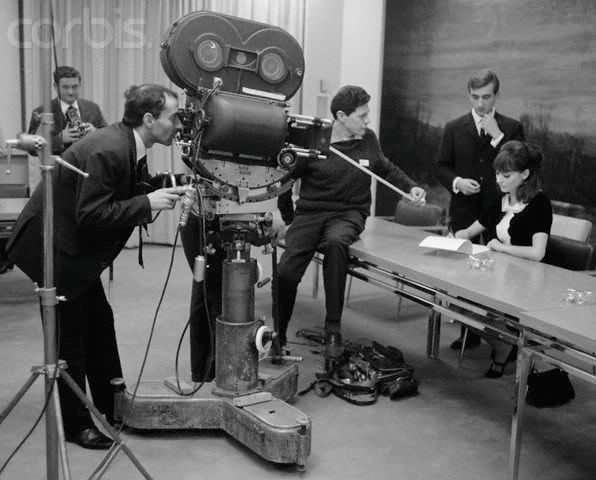

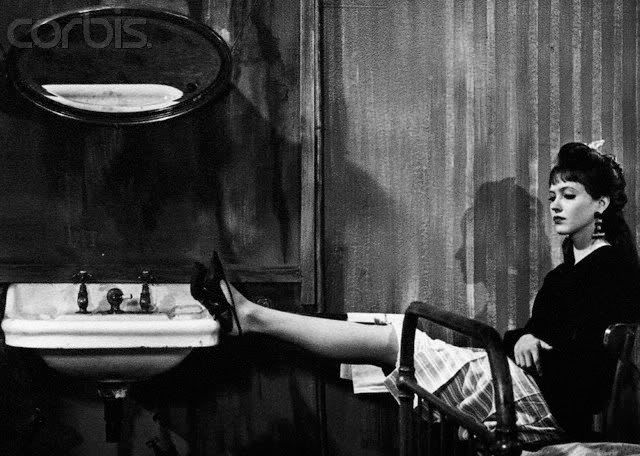
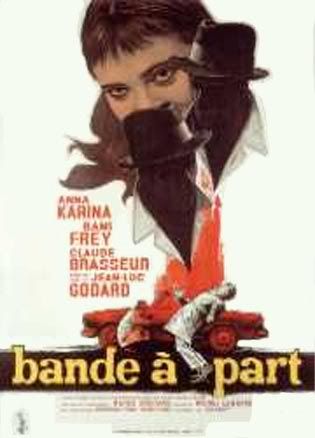
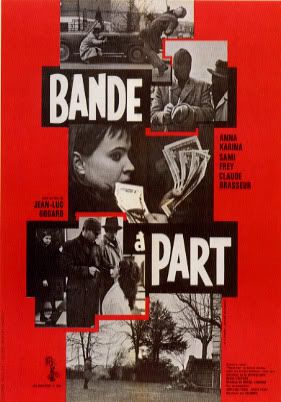
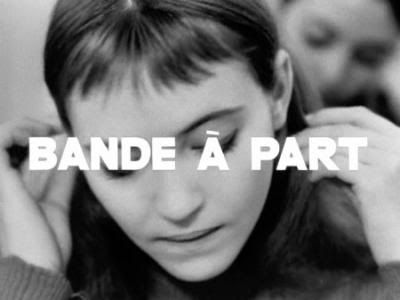
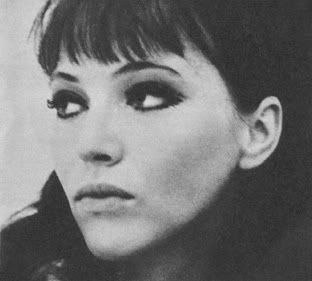
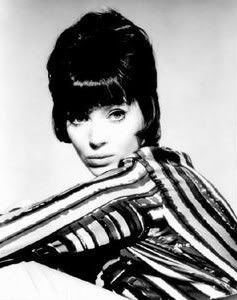

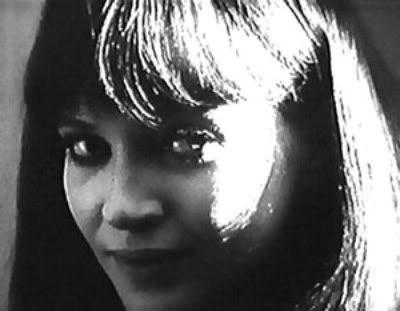
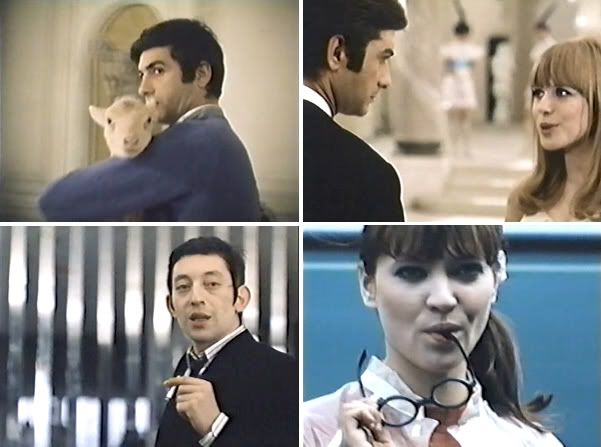
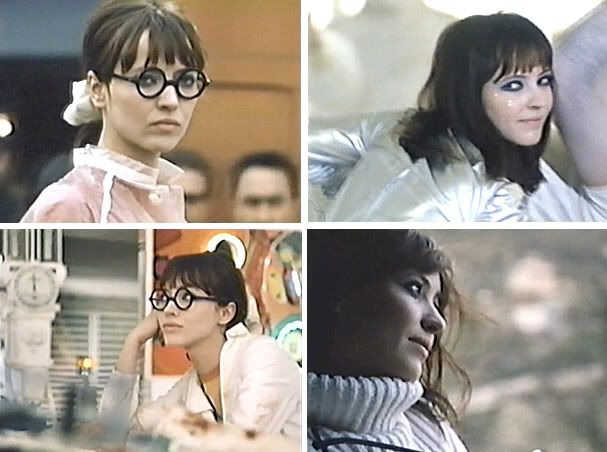
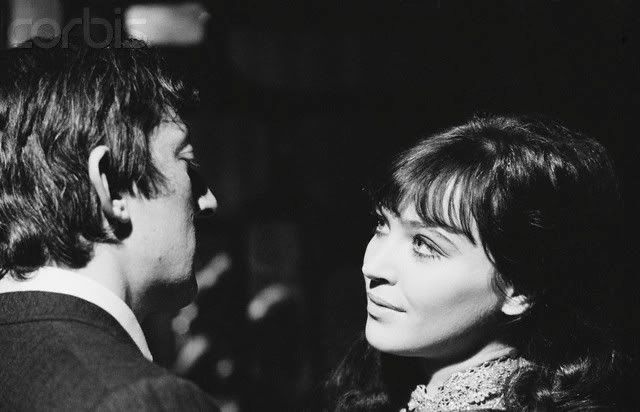
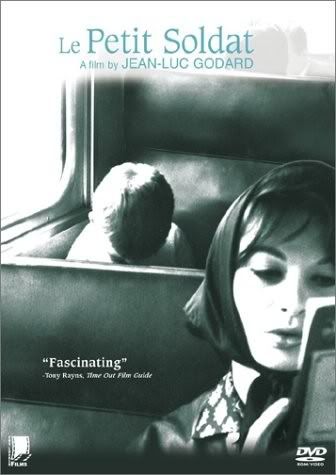
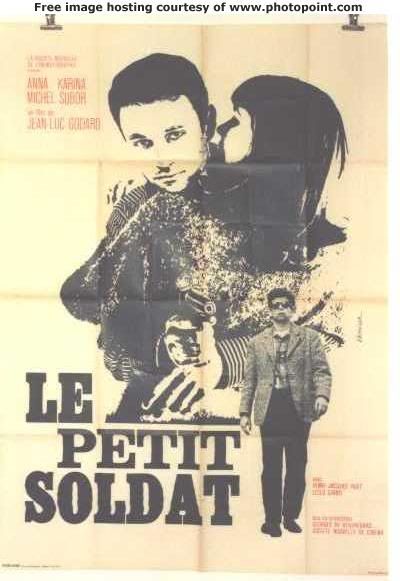
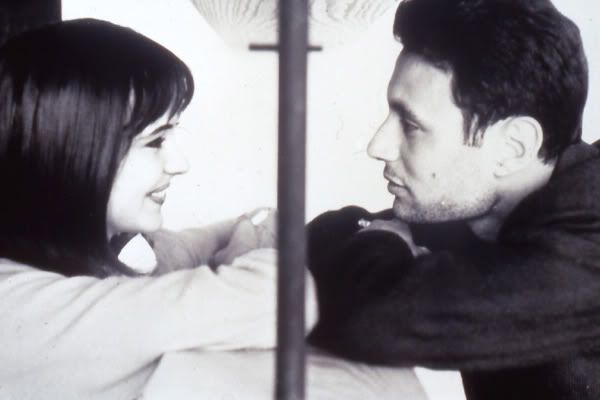
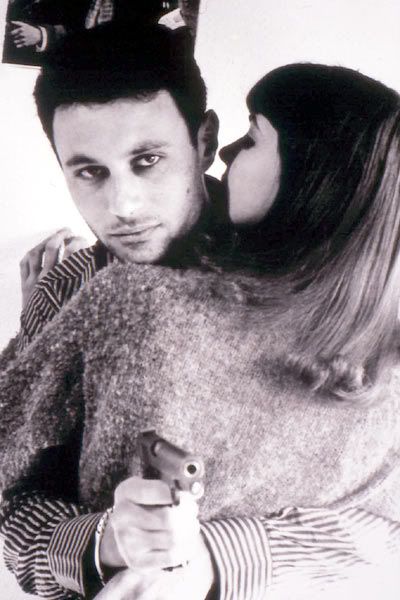
Le Petit Soldat
Anna Karina et Michel Subor
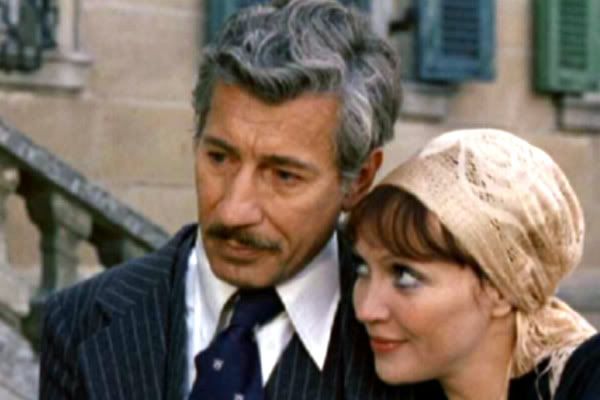
La Roulette chinoise
Ulli Lommel et Anna Karina
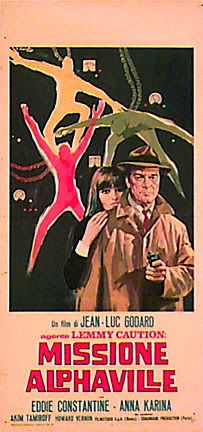
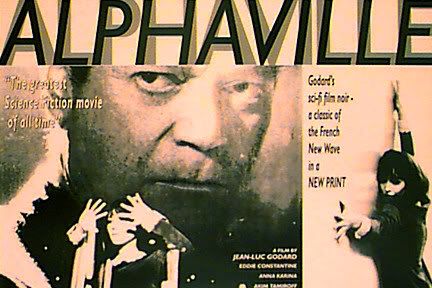
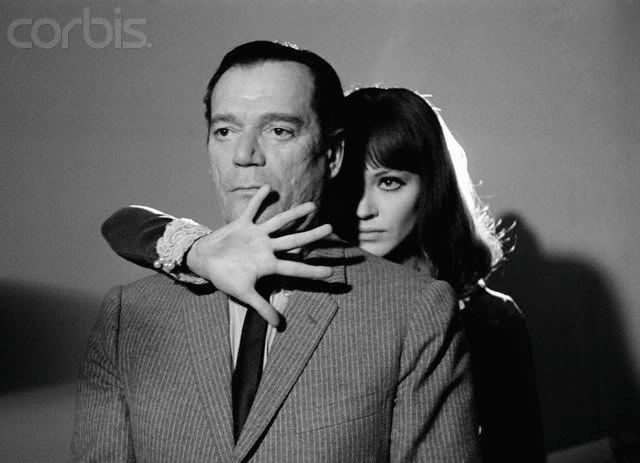
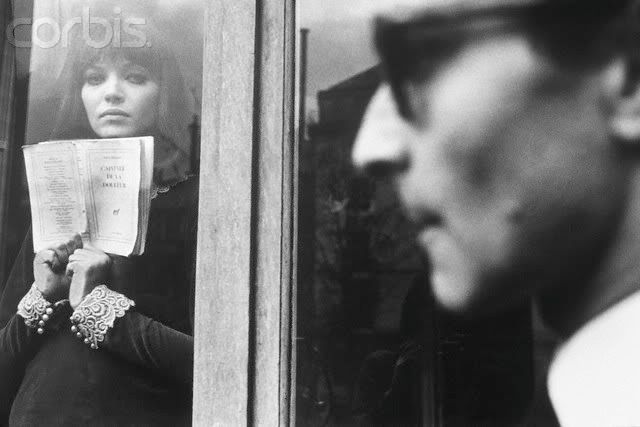
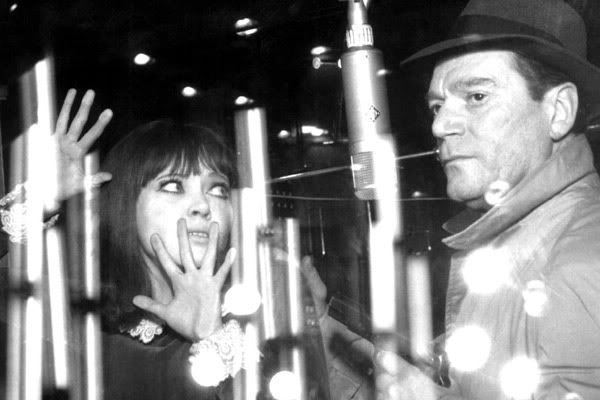

Alphaville, une étrange aventure de Lemmy Caution
Anna Karina et Eddie Constantine
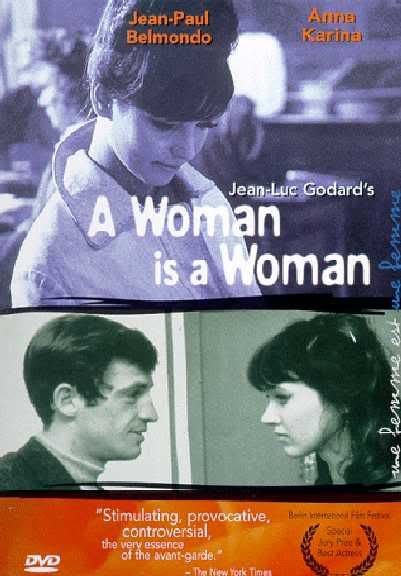
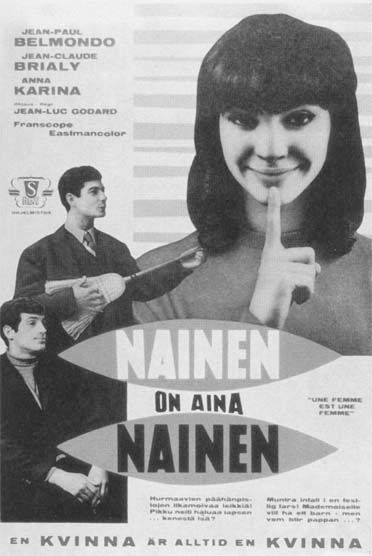
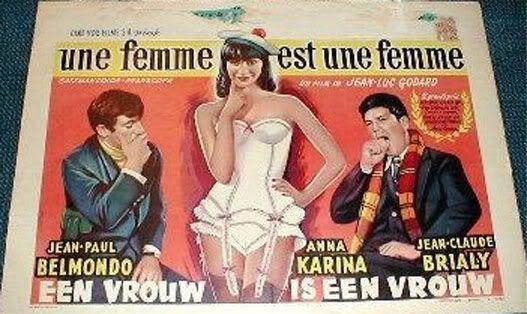

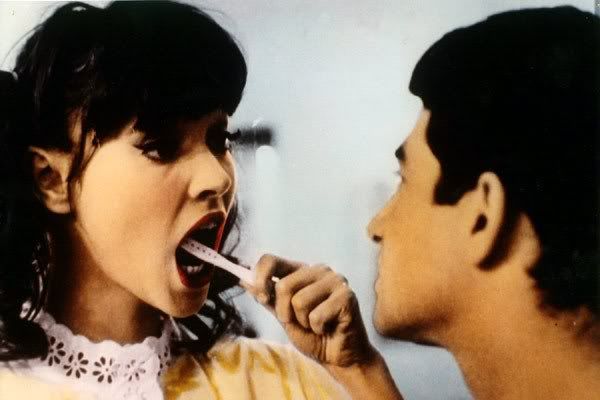
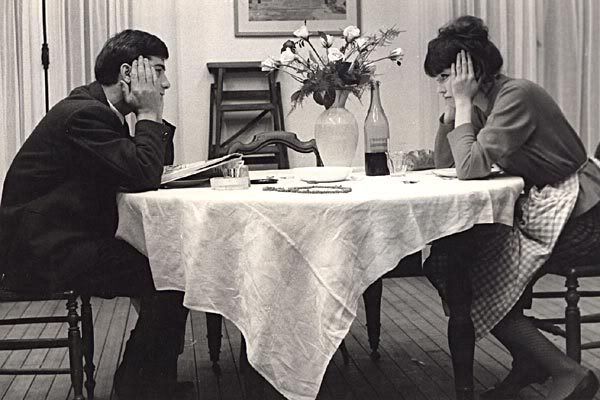
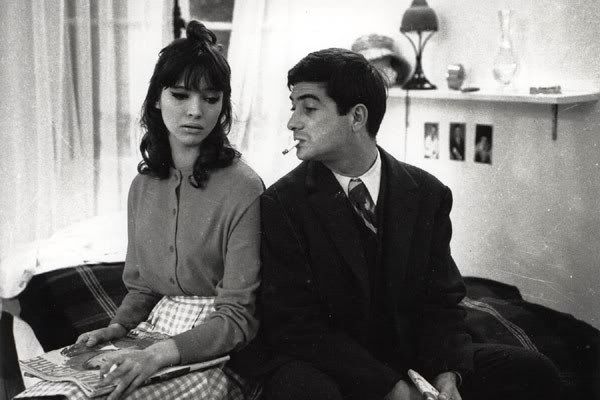
Une femme est une femme
Anna Karina et Jean-Claude Brialy
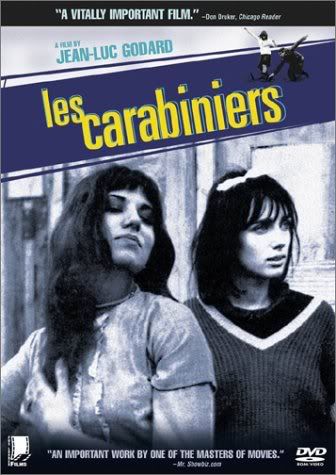
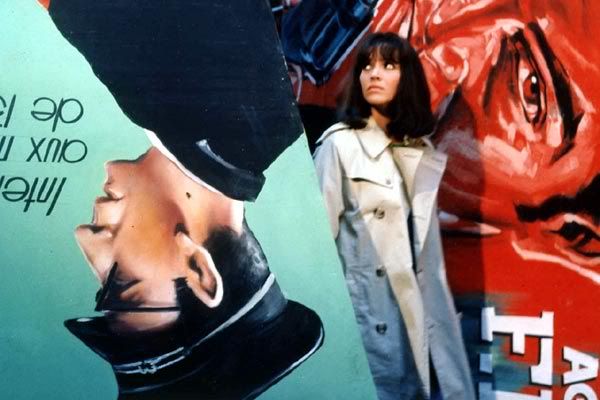
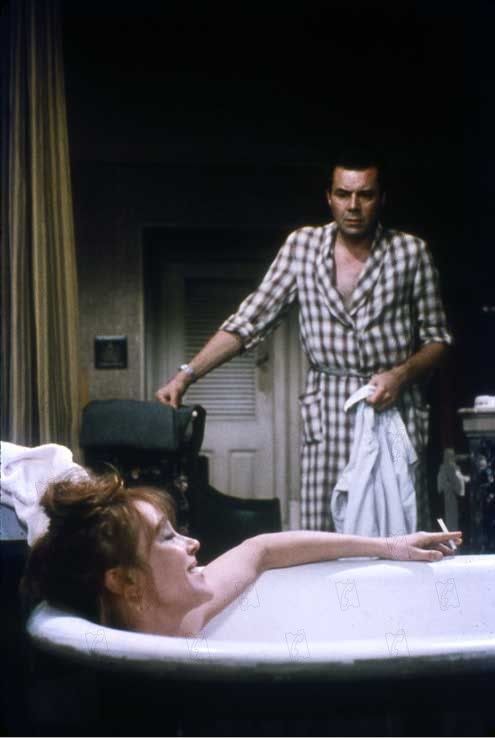
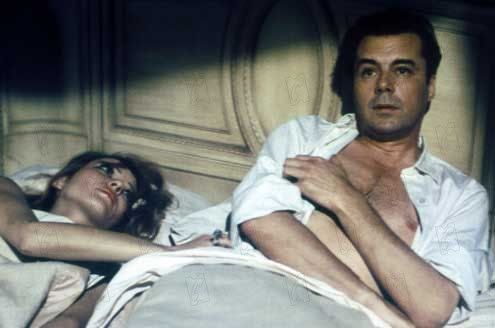
Justine
Anna Karina, Dirk Bogarde
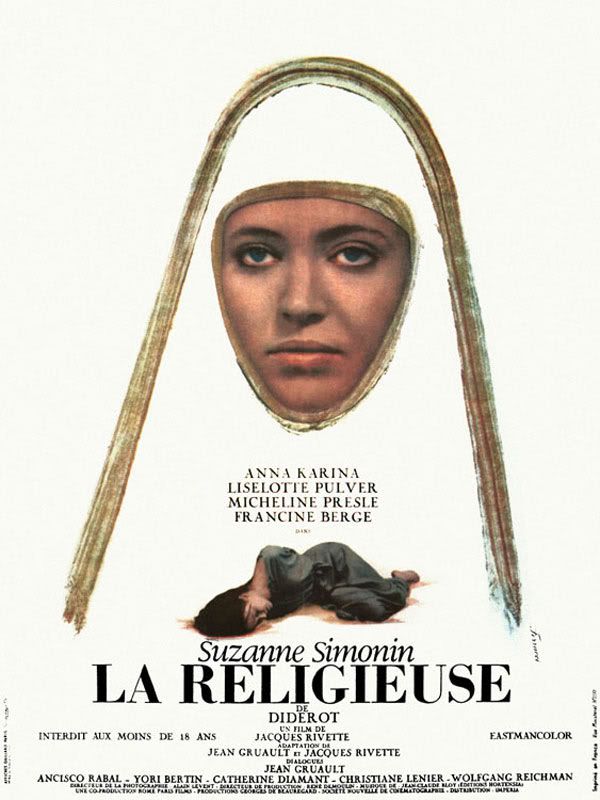

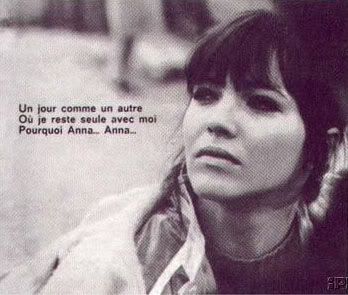
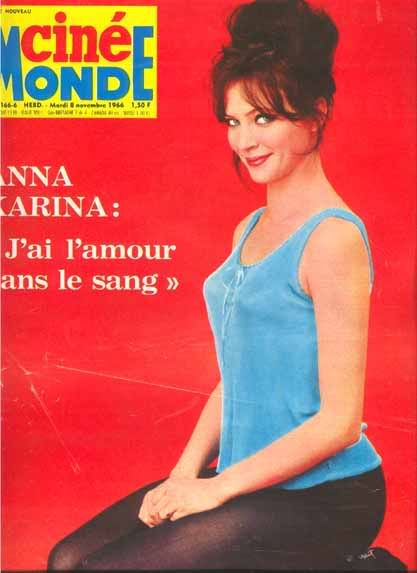
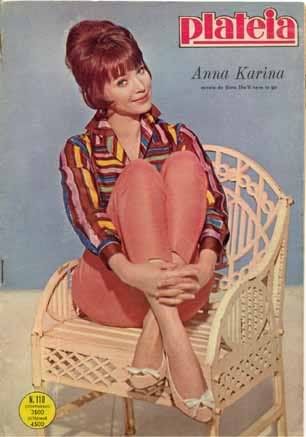
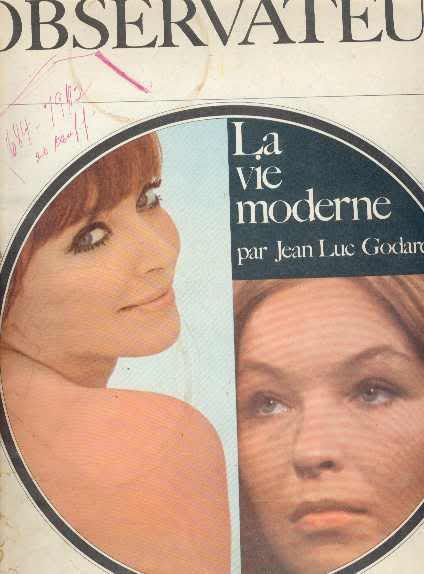
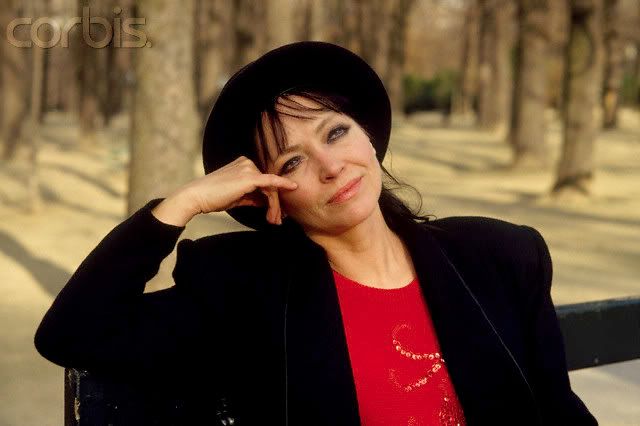
ANNA KARINA'S PAGES